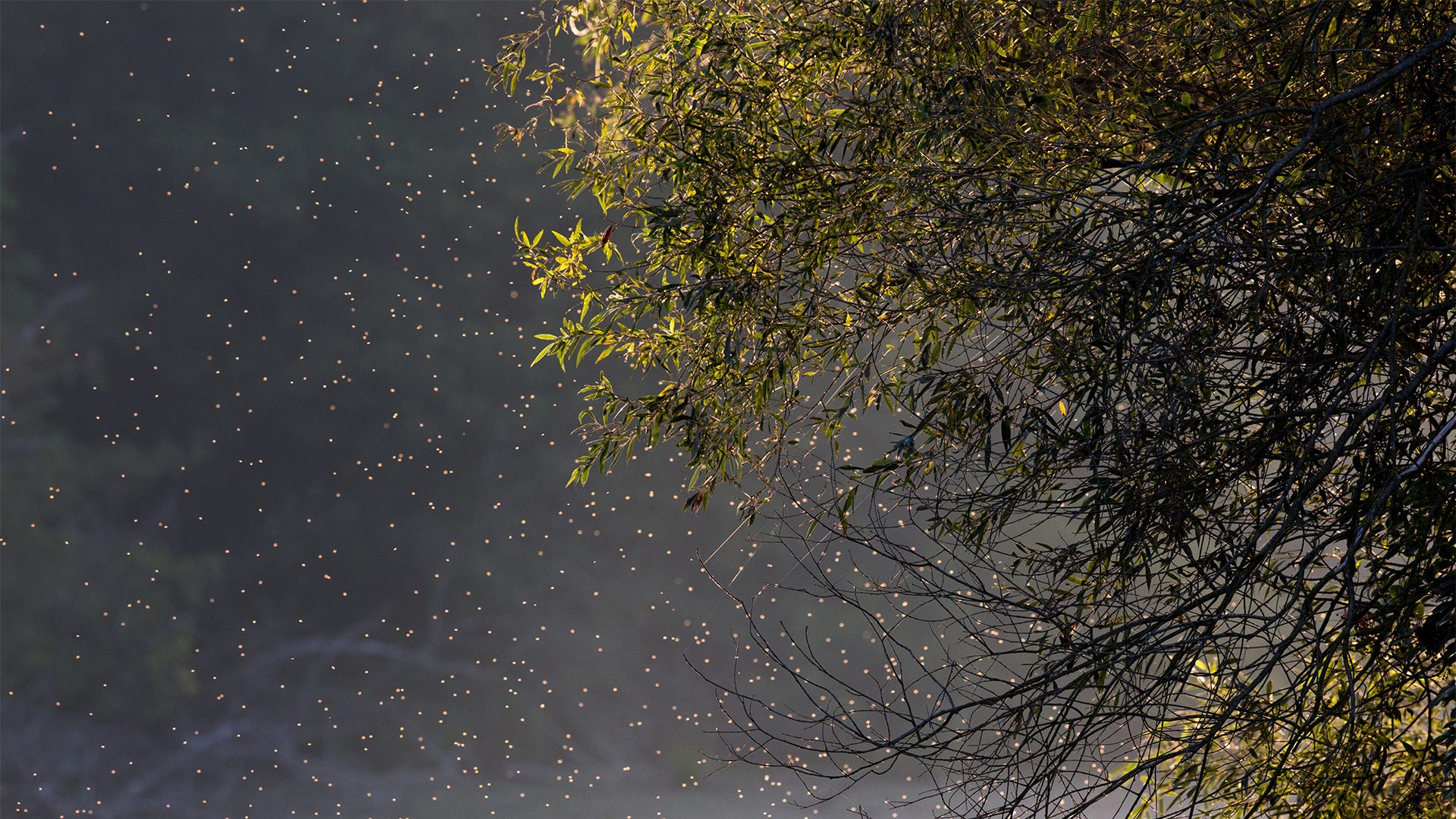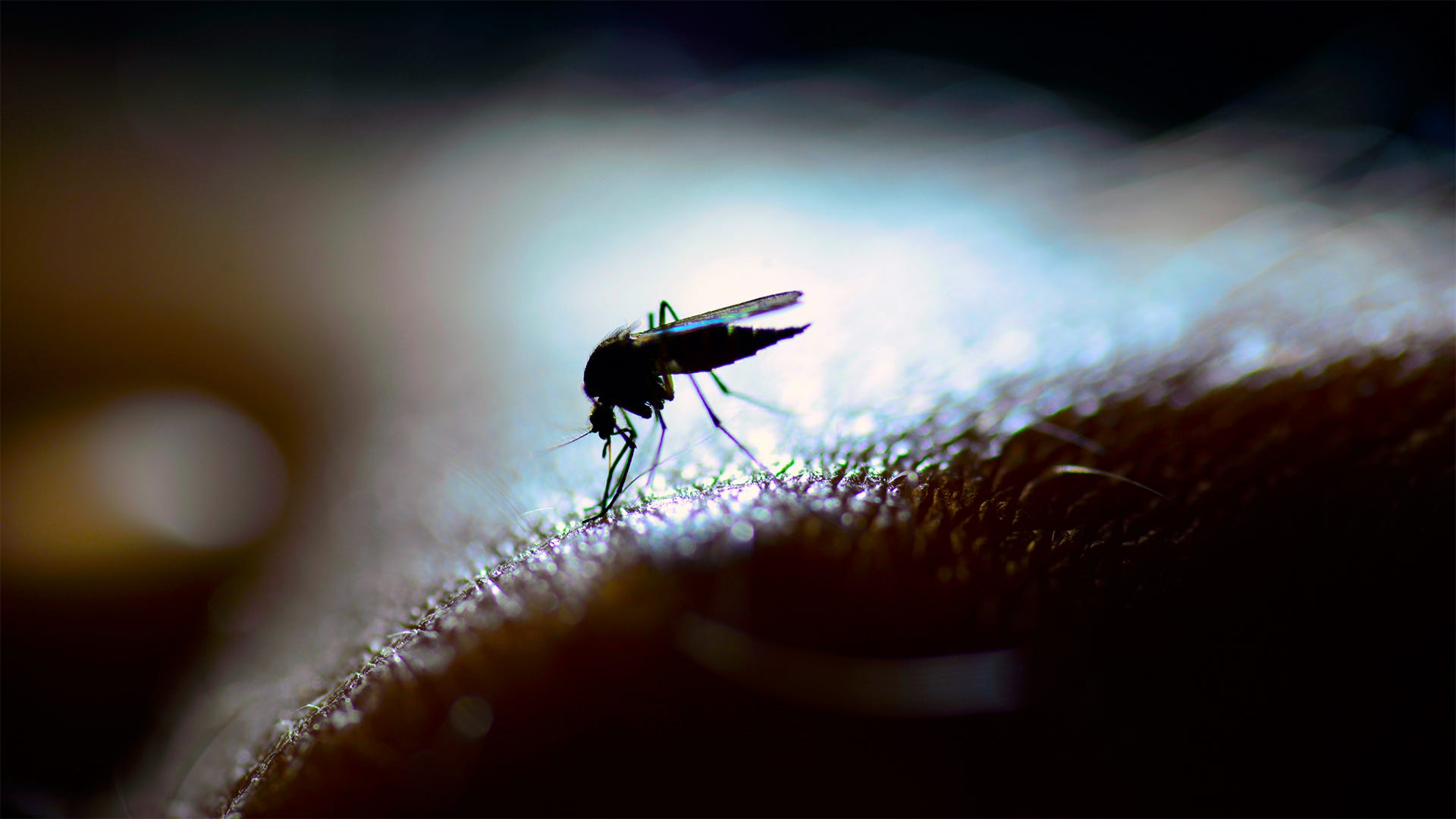
If you live near a beach, marsh, lake, pond or slow-moving river or creek, then you’ve probably encountered biting midges. These insects leave itchy, red welts on your skin when they bite you. It’s understandable that you’ll look for ways to get rid of midges!
We came up with the most common questions people have about midges, so here we go. Click on the question you want answered!
- What Does the Biting Midge Fly Look Like?
- What is the Midge Life Cycle?
- What Attracts Midges and What Do Midges Eat?
- Why Do Midges Bite People?
- How Can I Get Rid of Midges?
- Are Midges the Same Thing as Mosquitoes?
1 – What Does the Biting Midge Fly Look Like?
Biting midges are small flies that develop near swampy areas. These insects can be major pests since they bite and draw blood from their victims, including humans.
The adult flies are gray in color and less than 1/8 of an inch long. Biting midges have segmented antennae, two wings, six legs and females have a proboscis for drawing blood.

2 – What is The Midge Life Cycle?
Midge eggs are laid in wet or swampy soils and soon hatch into larvae. As the larvae develops, they need to remain moist. They gather nutrients by consuming small organisms. They develop into adult flies in as little as two weeks. Full-grown adults are still small, and often no bigger than the lettering on a U.S. dime coin.
Larvae can suspend their development as cold winter temperatures arrive. They then stay underwater until freezing temperatures subside.
Midges of all kinds are a regular food source for fish, other insects, birds and spiders.
3 – What Attracts Midges? What Do Midges Eat?
Midge’s primary nourishment comes from flower nectar and other high-sugar juices, such as plant sap.
Midges are also attracted to humans, their pets and livestock thanks to the CO2, body heat and particular scents we make. Once midges become aware of these cues, they hunt down their target.

4 – Why Do Midges Bite?
Female midges are the ones who bite. These biters need the protein from blood to begin producing eggs. Biting midges will attack any kind of mammal. Birds, reptiles and amphibians can also be targeted.
Some species bite and feed in the daytime, others at dusk and into the night. Lights can attract night-feeding midges, and they will often slip through window screens with large openings.
5 – How to Get Rid of Midges?
Midges, also known as No-See-Ums, punkies and sandflies, can be hard to eliminate on your property. The basic ideas are these:
- Set up biting insect CO2 traps, like any of our Mosquito Magnet® traps, to draw the insects away and kill them.
- Install small-mesh screens in windows to prevent their entry.
- Use air conditioning to keep midges from entering buildings.
- Pick clothing that completely covers the skin.
- Apply insect repellent to drive them away.
Further, most species will only travel a mile or less from their hatching site to find food, so recognizing and eliminating local breeding sites can cut down on their numbers.

6 – Midges Vs. Mosquitoes: Are Mosquitoes different from No-See-Ums?
Midges and mosquitoes are different types of insects that often seek out the same resources, including egg incubation sites and opportunities for blood meals.
As a result, midges can be just as much of a problem as mosquitoes. Luckily, what works against mosquitoes usually works against biting midges as well. Repellents drive them away. Long-sleeved clothing stops them from biting. And, most importantly, they both are drawn to Mosquito Magnet® CO2 traps.
These traps use CO2 and secondary attractants to draw mosquitoes, midges and other biting insects to the trap and away from living targets. As they investigate the trap, the midges are sucked inside the trap and captured in a net. Within 24 hours, the trapped insects die of dehydration.
Your Battle Against Midges
Are you experiencing problems with midges, mosquitoes and other biting insects at your home or business, then you’ll want to learn more about Mosquito Magnet®. Try visiting Mosquito Magnet® on Facebook and then subscribe to our E-Newsletter for more articles like this, as well as important product announcements.



